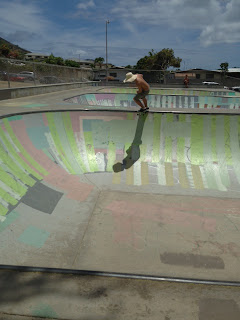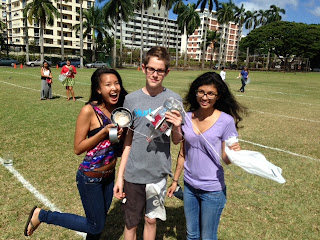Before this summer I really had no idea what physics was. Now I think I know what physics is. Physics is motion, sound, and light. Physics plays a role in almost every minute of everyones lives. Physics is everywhere. Its the study of nature, matter and energy, which pretty much is everything that surrounds us.
 |
| Add caption |
This summer boy oh boy did we learn a bunch ! First unit we learned about metric conversions and scientific notations which are crucial things that we will probably need in any science class. We also learned about different types of graphs no relationship graphs, linear graphs, inverse graphs, square graphs and squared graphs. All of these graphs will be helpful in the future whenever I am doing work involving graphs. We also learned about accuracy and precision. In the second unit we did a lot of kinematics and I learned about scalars, vectors, and velocity. I learned all of the graphing rules for position vs. times and velocity vs. time graphs. In unit 3 we learned all about acceleration How to get acceleration and how to graph it. We also learned about DATVVo questions and DAT, VAT, & VAD Unit 3 was one big math lesson. Unit 4 was similar to unit 3 it had a lot of math except the problems had to do with projectiles. The major thing we learned is that axes are independent, what happens on the x or y axis stays on the x or y axis. Unit 5 was all about vectors and trig. We learned about Bureku and different forces. We had to know how to diagrams too. We learned about all of newtons laws, law of inertia, law of acceleration and action reaction. This unit had a lot to do with forces and we learned about friction. Unit 6 was similar to unit 5 it involved diagrams. We learned the equation Fnet=ma and about friction. There are two different types of friction static and kinetic. In unit 7 we learned about momentum. We learned about momentum is always conserved and that p=mv. We also learned that objects with momentum will stay with momentum unless acted on by a outside unbalanced force. Elastic is bouncy, in elastic sticks. Unit 8 was a big one. We learned about work, energy and power. Energy is conserved like matter and momentum. Energy is a scalar and there are three different types of energy. There is kinetic, potential gravitational, and spring potential. We also learned equations to get all of these energies. Work = change in energy, force x distance. Power = work divided by time. Unit 9 was about waves, mostly sound waves. We learned about the characteristics of a wave like the wave length, the crest, trough amplitude. We also learned about medium which is the material a wave is in. Period and frequency have to do with the time of a wave. We learned about transverse waves and longitudinal waves. An example of a transverse wave is light and a example of a longitudinal wave is sound. We learned about constructive and destructive interference which has to do with two waves in the same area. Reflection is bouncing and refraction is bending, which we focused more on in the next lesson. Unit ten was a big one. We focused on light and its reflection and refraction. Light is an electromagnetic wave meaning it needs no medium. The two different types of reflection are specular and diffuse. Specular reflection is on smooth surfaces and diffuse is on rough and bump surfaces. We learned about light too, the primary and complimentary colors and how they are different from pigments. We also answered important questions that had to do with light and color like why the sky is blue and why the ocean is blue. The law of reflection states that the angle of incidence= the angle of reflection this was crucial when we were drawing ray diagrams. We also learned snails law which has to do with fast and slow mediums. Depending if the light goes from a fast medium to a slow medium or a slow medium to a fast medium the light will bend towards the normal or away from. Every material has a different index of refraction like water has 1.33 and glass has 1.5. Lastly we learned about drawing light rays in lenses and how to tell if the image was real or virtual, inverted or upright and enlarged or reduced. We figured those things out by drawing parallel rays, focal rays and essential rays,
I liked how this class was really fun. We did so many activities every day, I was never really bored. Mr. Blake always found a way to make the class interesting. Some really fun activities we did were the slip n slide, the bottle rockets, the human pendulums. Labs that I enjoyed were the projectiles one, and all of the light demos and the light lab were really fun too. I liked how we were emailed our grades frequently so that we always knew what our grade was, and didn't have to ask or never know. I have never been in a class where we are emailed our grades and it was a nice change. I also liked the unit packets that we got every unit. They were really informative and had a great unit review at the end. They were good for studying with before any test. I also like how we didn't have a text book like most other classes, just our notes and the worksheets we got. Another thing that I liked was the unit quizzes that were online. They were a good review of things we learned and I used them before every test to study. I liked how our only homework every day was a simple blogpost. The blogpost is a good idea because it is pretty simple but its also a good and creative way to review over what we learned. I liked how Mr. Blake always wrote our agenda for the day on the board, it was nice to know what we would be doing for the day.
One thing that can be modified is the lack of field trips we took. We did take "field trips" trips to the field but I think that one or two field trips in this course would be a good idea. We could go to the water park to learn about waves or anywhere really because physics is everywhere.
Mr. Blake thanks for being such a great teacher! Even though your from Kamehameha you were still good. You also made class enjoyable to be in with your music and jokes. I also felt like I knew what was happening in class because you were good at repeating information and explaining it well. I had a great summer thanks !
















































